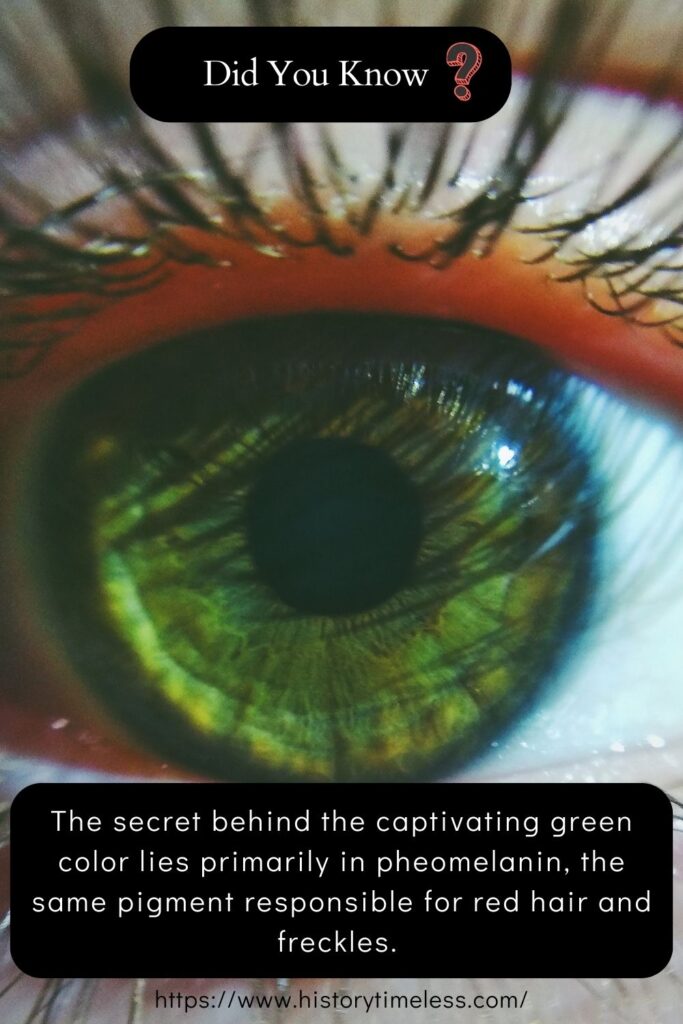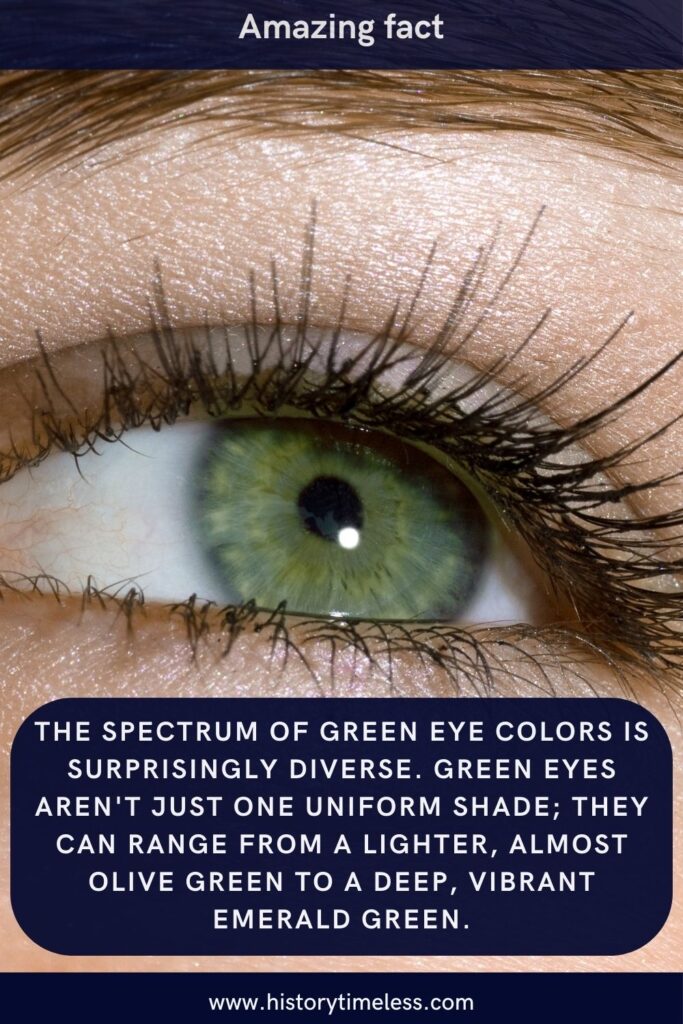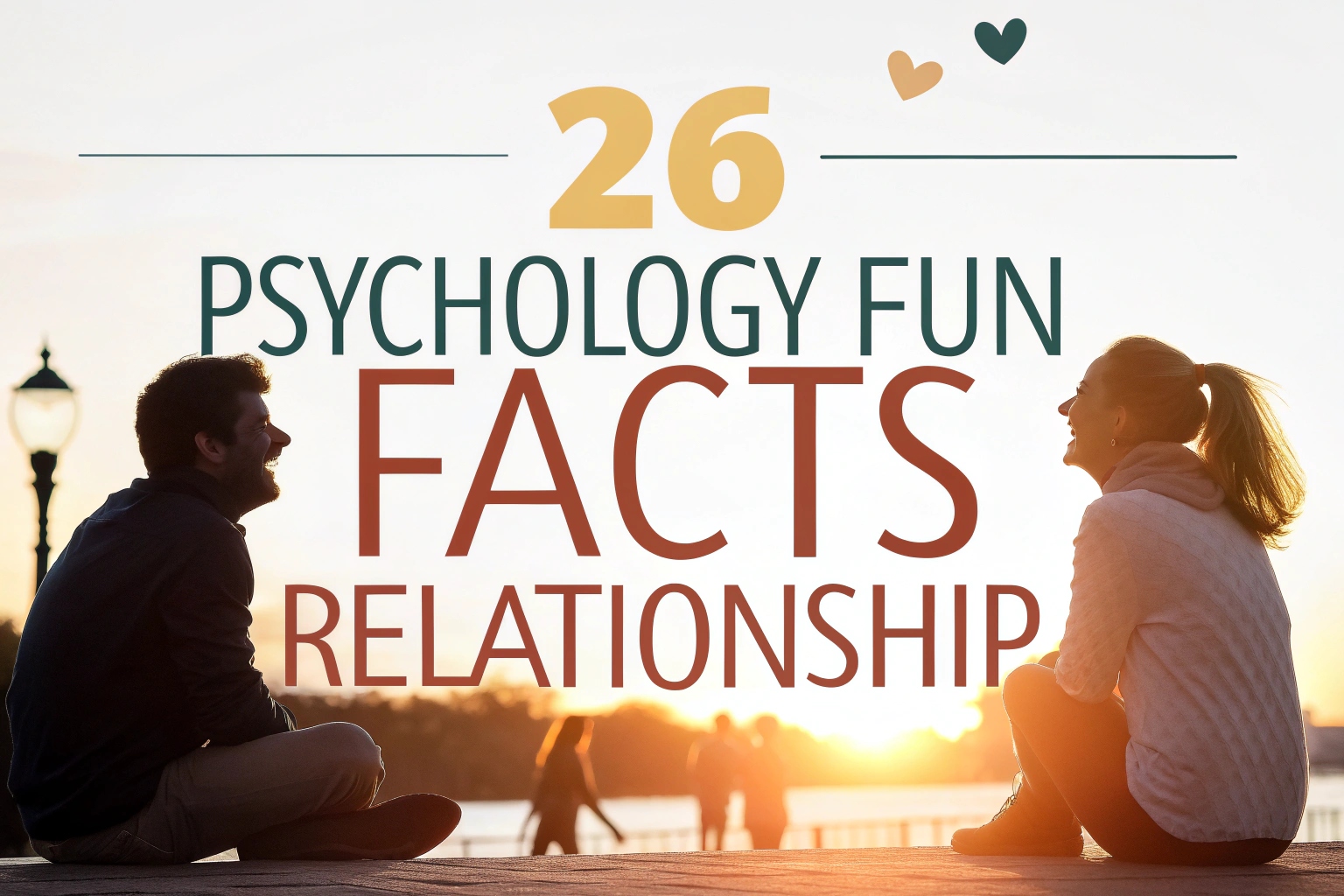Intrigued by the captivating allure of green eyes? You’ve come to the right place! Green eyes are often described as mysterious and enchanting, and there’s a lot more to them than meets the eye.
From their genetic origins to cultural perceptions and fascinating variations, we’re about to dive deep into the world of green eyes.
Get ready to uncover some amazing facts that will deepen your appreciation for this stunning eye color. Let’s explore the magic behind those emerald peepers!
1. Green Eyes Inherit a Complex Genetic Puzzle, Not a Simple Gene
Green eyes aren’t determined by a single gene like brown eyes often are. Instead, they are the result of a complex interplay of multiple genes. This polygenic inheritance means that predicting green eyes isn’t as straightforward as Punnett squares in high school biology.
Genes involved in melanin production, particularly pheomelanin (red/yellow pigment) and eumelanin (brown/black pigment), interact in intricate ways to create the spectrum of green shades.
This genetic complexity explains why green eyes are less common and more variable in their appearance compared to brown eyes, which have a more dominant genetic pathway.
2. Pheomelanin: The Pigment Responsible for Green Eye Hues
The secret behind the captivating green color lies primarily in pheomelanin, the same pigment responsible for red hair and freckles.

Unlike brown eyes, which have significant amounts of eumelanin, green eyes have a moderate amount of pheomelanin and a lower amount of eumelanin in the iris. The presence of pheomelanin in the iris stroma, along with the scattering of light, creates the green appearance.
The exact shade of green can vary depending on the ratio of pheomelanin to eumelanin and the way light interacts with these pigments within the iris structure.
3. Green Eyes Are Relatively Rare on a Global Scale
While captivating, green eyes are indeed a relatively rare eye color worldwide. Globally, only about 2% of the world’s population boasts green eyes. This rarity contributes to their mystique and often makes them stand out. In comparison, brown eyes are the most common, followed by blue eyes. The distribution of green eyes is also geographically concentrated, making them even less common in certain parts of the world. This scarcity adds to the unique appeal and fascination associated with green eyes.
4. Geographic Hotspots: Green Eyes Thrive in Specific Regions
Although globally rare, green eyes are more prevalent in certain geographic regions. Northern and Western Europe, particularly countries like Ireland, Scotland, and Scandinavia, have a higher concentration of green-eyed individuals.
For instance, Scotland is estimated to have the highest percentage of green-eyed people, with nearly 29% of the population possessing this eye color.
This regional concentration suggests that the genetic mutations leading to green eyes may have originated or been favored in these populations and then spread through migration and gene flow.
5. Green Eyes Can Change Shade and Intensity with Lighting
One of the most fascinating aspects of green eyes is their chameleon-like ability to appear different shades of green, and even sometimes hints of other colors, depending on the lighting conditions and surrounding colors.
In bright sunlight, green eyes may appear more vibrant and emerald, while in dimmer light, they might seem more muted or even slightly greyish.
Clothing and makeup colors can also influence how green eyes are perceived, enhancing or subtly altering their apparent shade. This dynamic quality adds to the captivating and ever-changing nature of green eyes.
6. Green Eyes Often Co-occur with Fair Skin and Red Hair
Due to the shared genetic pathways involving pheomelanin, green eyes are frequently observed in individuals with fair skin and red hair. The genes that contribute to pheomelanin production influence not only eye color but also hair and skin pigmentation.
This genetic linkage explains why you often see green eyes paired with pale complexions and reddish or blonde hair. While not always the case, the association is strong enough to be a noticeable pattern, making this combination of features quite striking and often considered particularly beautiful.
7. Babies Aren’t Born with Green Eyes; Color Develops Over Time
While some babies might appear to have green eyes at birth, the true color often develops over time, usually within the first few months or even years of life.
Many babies are born with blue or grey eyes due to low melanin levels at birth. As a baby grows, melanocytes in the iris begin to produce melanin. If the type and amount of melanin produced lead to a combination of pheomelanin and lower levels of eumelanin, the eyes will transition to green.
This developmental process means the eye color you see in a newborn might not be their permanent eye color.
8. Green Eyes Are Sometimes Mistaken for Hazel or Blue
The variability of green eyes can sometimes lead to them being misidentified as hazel or blue. Hazel eyes, which contain both pheomelanin and eumelanin in varying amounts, can appear greenish-brown or brownish-green, causing confusion.
Similarly, some shades of green eyes, particularly those with less pheomelanin, can appear somewhat bluish, especially in certain lighting.
The key difference often lies in the dominant pigment and the overall impression – true green eyes will have a distinct green hue, even if it fluctuates, while hazel eyes have a more mixed, multi-toned appearance.
9. Green Eyes Are Not Actually Green Pigmented
Interestingly, green eyes do not actually contain green pigment. Eye color is determined by the amount and type of melanin in the iris and how light is scattered.
The green appearance is an optical illusion created by the way light is scattered and absorbed by the melanin present.
When light enters the eye and interacts with pheomelanin and the underlying collagen fibers in the iris stroma, it scatters in a way that reflects more green wavelengths, resulting in the perception of green eyes. This phenomenon is similar to how blue eyes appear blue despite lacking blue pigment.
10. Green Eyes Have Been Associated with Mysticism and Magic
Throughout history and in various cultures, green eyes have been linked to mysticism, magic, and even supernatural abilities.
This association likely stems from their rarity and striking appearance, which can be perceived as unusual or otherworldly.
In folklore and mythology, green-eyed individuals are sometimes portrayed as having special powers or a connection to nature.
While these are just cultural beliefs, they contribute to the romanticized and enigmatic image often associated with green eyes.
11. Green Eyes are Less Sensitive to Sunlight Than Blue Eyes
Compared to blue eyes, green eyes tend to have slightly more melanin, which offers a bit more protection against sunlight. While still more sensitive than brown eyes, the moderate amount of melanin in green eyes provides some level of shielding from UV radiation.
This doesn’t mean green-eyed individuals are immune to sun damage, but they might experience slightly less light sensitivity compared to those with blue eyes, who have very little melanin in their irises. However, everyone, regardless of eye color, should still protect their eyes from excessive sun exposure.
12. Green Eyes Can Range in Shade from Olive to Emerald
The spectrum of green eye colors is surprisingly diverse. Green eyes aren’t just one uniform shade; they can range from a lighter, almost olive green to a deep, vibrant emerald green.

Some green eyes may have hints of gold or brown, while others are a pure, clear green. This variation is due to the subtle differences in the amount and distribution of pheomelanin and eumelanin within the iris, as well as individual genetic variations. This wide range of shades adds to the beauty and individuality of green eyes.
13. Green Eyes Were Once Thought to be a European Trait
Historically, green eyes were often considered a predominantly European trait, particularly associated with Celtic and Germanic populations. While it’s true that green eyes are more common in Northern and Western Europe, they are not exclusively European.
They can be found in various populations around the world, though in much smaller percentages. This misconception likely arose due to the higher visibility and study of European populations in early genetic research. Green eyes, while more prevalent in Europe, are a global phenomenon, albeit a rarer one.
14. Green Eyes Can Become More Common in Future Generations
While currently rare, the frequency of green eyes in future generations could potentially increase in certain populations. As genetic mixing and migration continue, genes for green eyes can spread more widely.
If individuals with genes for green eyes have children with partners who also carry these genes (even if they don’t have green eyes themselves), the chances of offspring having green eyes increase.
Therefore, while green eyes may remain relatively rare globally, their prevalence could shift and potentially become more common in some areas over time.
15. Green Eyes are Often Described as “Cat-Like” or “Feline”
The intense and sometimes shifting shades of green eyes often lead to comparisons with the eyes of cats, particularly felines with striking green or golden irises.
This association contributes to the mystique and perceived exoticism of green eyes. The sharp, piercing quality that some green eyes possess, especially those with a brighter, emerald hue, can evoke a similar captivating gaze often seen in cats. This feline comparison is a common and evocative way to describe the allure of green eyes.
16. Green Eyes Can Appear More or Less Intense Based on Mood
Anecdotally, some people believe that eye color, including green eyes, can appear to change slightly based on a person’s mood or emotional state. While there’s no scientific evidence to definitively prove that the actual pigment in the iris changes with emotions, the perception of eye color can be influenced by factors like pupil dilation and blood flow. When pupils dilate (for example, in excitement or strong emotions), the iris pigment might appear more concentrated and intense, potentially making green eyes seem brighter or deeper.
17. Green Eyes Are Studied in Genetic Research to Understand Melanin
Due to their complex genetic basis and the involvement of pheomelanin, green eyes are of interest in genetic research. Studying the genes responsible for green eye color helps scientists understand the broader mechanisms of melanin production and regulation in humans.
This research can have implications for understanding skin and hair pigmentation, as well as conditions related to melanin disorders.
Green eyes serve as a valuable model for investigating the intricate genetic pathways that determine human pigmentation traits.
18. Green Eyes Are Often Considered a Desirable Beauty Trait
In many cultures, green eyes are considered a highly desirable and attractive beauty trait. Their rarity and striking appearance contribute to this perception.
Media, fashion, and popular culture often portray green-eyed individuals as beautiful, alluring, and unique.
This cultural appreciation for green eyes can influence self-perception and contribute to the confidence and desirability associated with having this eye color. Of course, beauty is subjective, but the cultural preference for green eyes is undeniable.
19. Green Eyes Are Linked to Neanderthal Ancestry in Some Studies
Some genetic studies suggest a potential link between green eyes and Neanderthal ancestry, particularly in European populations.
Neanderthals, who lived in Europe before modern humans, are believed to have had a higher frequency of lighter eye and hair colors.
While more research is needed to confirm this connection, the presence of certain genetic variants associated with green eyes in modern Europeans may reflect a contribution from Neanderthal genes through interbreeding in the distant past.
20. Green Eyes Can Be a Mix of Colors Up Close
Upon closer inspection, green eyes often reveal a fascinating mix of colors beyond just green. You might notice flecks of gold, brown, or even blue within the iris.
This intricate pattern of colors contributes to the depth and complexity of green eyes. The interplay of these different hues creates a unique mosaic within each green iris, making them even more captivating and individualized when viewed up close.
21. Green Eyes Are Not Uniform – Patterns Vary
Just like fingerprints, no two sets of green eyes are exactly alike. The patterns and striations within the iris, which contribute to the overall appearance of green eyes, are unique to each individual.
These intricate patterns are formed during development and are influenced by genetic and environmental factors.
This individuality means that your green eyes are as distinct and personal to you as your own unique identity.
22. Green Eyes Can Be Enhanced by Certain Makeup Colors
For those who want to accentuate their green eyes, certain makeup colors can enhance their vibrancy. Warm tones like purples, browns, golds, and copper shades often complement green eyes beautifully.
These colors can bring out the green hues and make them appear even more striking. Cooler tones like silvers and blues can sometimes also work, depending on the specific shade of green and skin tone, but warm tones are generally considered more universally flattering for green eyes.
23. Green Eyes Can Seem to “Sparkle” More Than Darker Eyes
Due to the way light interacts with the structure of the iris in green eyes, they can sometimes appear to “sparkle” or have a more luminous quality compared to darker eyes.
This effect is partly due to the scattering of light by collagen fibers in the stroma and the presence of pheomelanin.
The lighter background of green eyes can also make the contrast with the dark pupil more pronounced, further enhancing the perception of sparkle and brightness.
24. Green Eyes Are a Relatively Recent Evolutionary Development
In terms of human evolutionary history, green eyes are a relatively recent development compared to brown eyes, which are considered the ancestral eye color.
The genetic mutations that led to lighter eye colors, including green, are believed to have arisen relatively recently in human history, likely within the last 10,000 years.
This makes green eyes a fascinating example of recent human evolution and adaptation, potentially linked to migration patterns and changing environmental conditions.
25. Celebrating the Uniqueness and Beauty of Green Eyes
Ultimately, green eyes are a remarkable and beautiful feature that deserves to be celebrated. Their rarity, complexity, and captivating appearance make them truly special.
Whether you have green eyes yourself, or simply admire them, appreciating their unique qualities is a wonderful way to recognize the diversity and beauty of human variation.
From their genetic origins to their cultural associations, green eyes hold a special place in the spectrum of human eye colors, and their allure continues to fascinate and enchant.
Discover more intriguing insights:
25 Facts About Gemini Women That’ll Keep You Guessing!
26 Facts About God That’ll Leave You Deep in Thought!
20+ Insane Facts About Animals That Defy Belief!
15+ Interesting World Facts: Say ‘Wow’ to These Discoveries!




